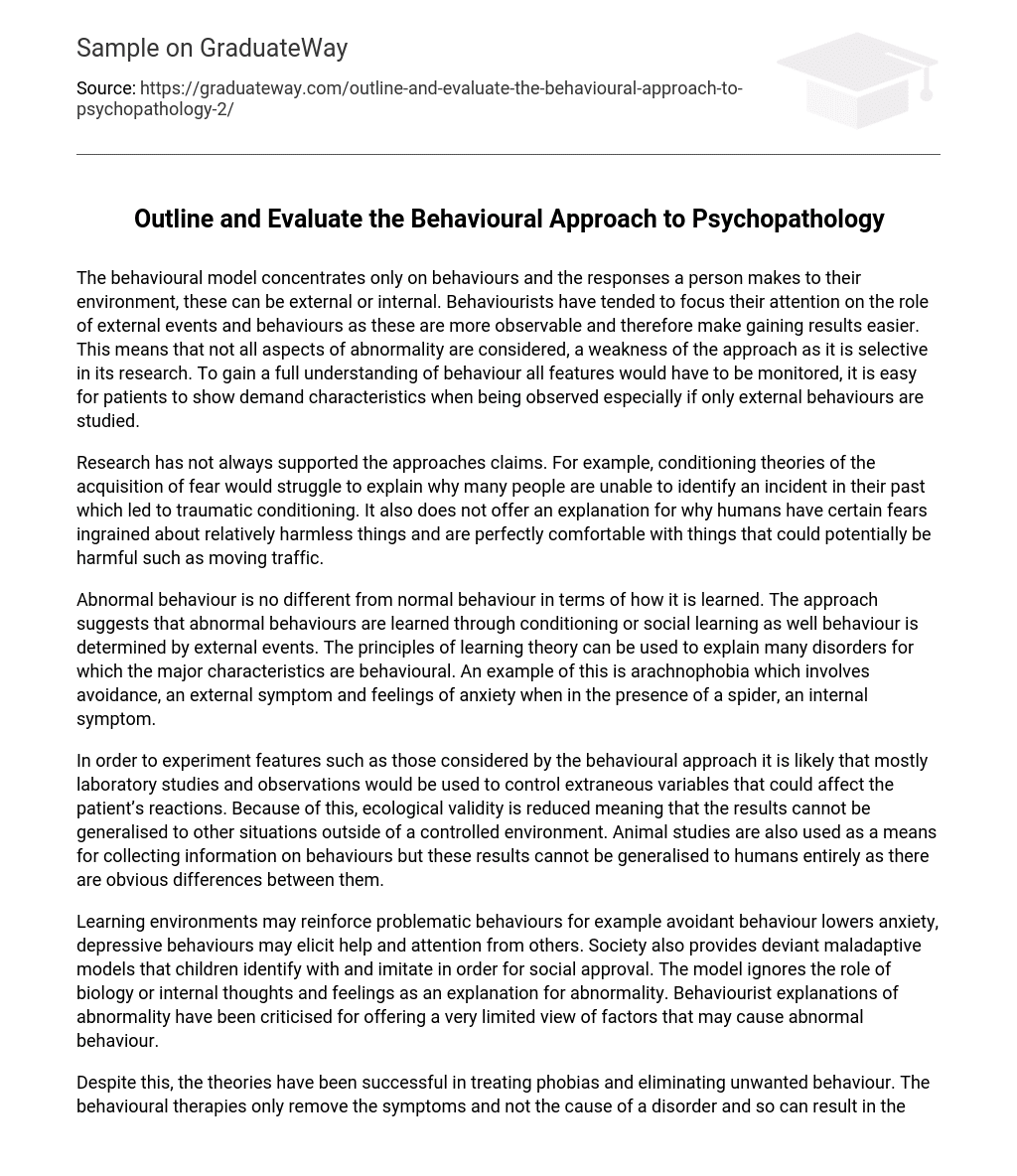The behavioural model focuses solely on behaviours and how a person responds to their environment, whether internally or externally. Behaviourists have typically emphasized the significance of external events and behaviours, as these are more readily observable and yield easier results. Consequently, this approach overlooks certain facets of abnormality, making it limited in its research. To comprehensively grasp behaviour, all aspects would need to be closely monitored. Patients often exhibit demand characteristics when under observation, particularly if only their external behaviours are scrutinized.
Many research studies have disputed the claims made by conditioning theories of fear acquisition. They struggle to explain why some individuals cannot recall a specific incident that caused traumatic conditioning. Additionally, these theories fail to clarify why humans have fears for harmless objects or situations, while feeling at ease around things that could be potentially dangerous, like moving traffic.
The learning approach proposes that abnormal behavior is acquired in the same way as normal behavior. It suggests that abnormal behaviors are learned through conditioning or social learning, as behavior is influenced by external events. The principles of learning theory can be applied to explain various disorders that exhibit behavioral characteristics. For instance, arachnophobia, which entails avoiding spiders and experiencing anxiety when encountering them, exemplifies this phenomenon.
Experimenting with features considered by the behavioural approach often involves employing laboratory studies and observations. This allows control over extraneous variables that may influence a patient’s reactions. However, this controlled environment reduces ecological validity, limiting the generalizability of the results to other real-life situations. Additionally, animal studies are utilized to gather information on behaviours. Nevertheless, it is important to acknowledge that these results cannot be fully extrapolated to humans due to inherent dissimilarities.
The text suggests that learning environments can contribute to problematic behaviors, such as avoidance and depression. These behaviors may be reinforced by receiving attention or approval from others. Additionally, society provides negative role models that children may imitate in order to gain social acceptance. The explanation for abnormal behavior provided by this model does not consider biological factors or internal thoughts and feelings. Critics argue that behaviorist explanations of abnormality offer a narrow perspective on the factors that can cause abnormal behavior.
Despite their success in treating phobias and eliminating unwanted behavior, behavioral therapies only address symptoms without addressing the underlying cause of a disorder. Therefore, symptoms may resurface, leading to potential relapse and a return to maladaptive behavior. In contrast, the psychodynamic approach not only provides explanations for the causes of abnormality but also allows for their correction. This makes it a stronger theory that may be more appealing to psychologists.





